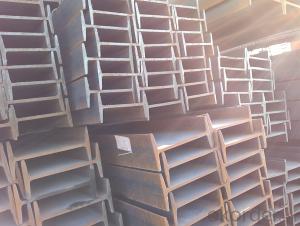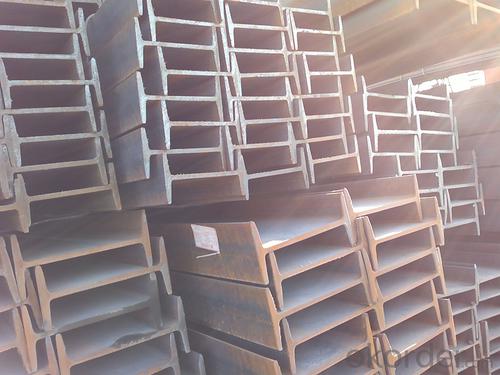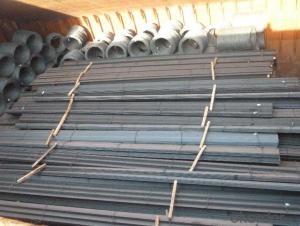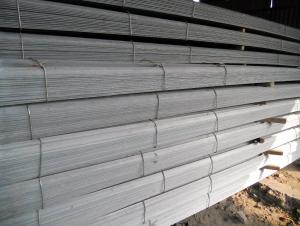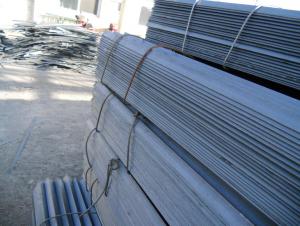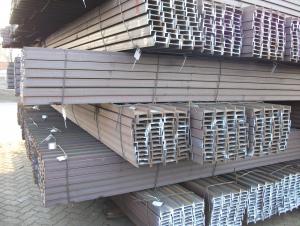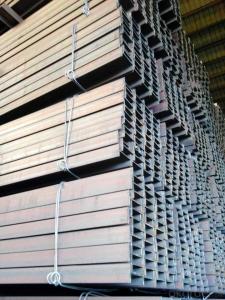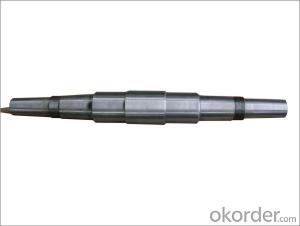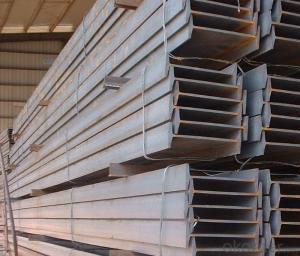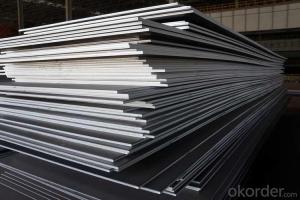Steel Hot Rolled IPEAA Beam High Quality
- Loading Port:
- China Main Port
- Payment Terms:
- TT or LC
- Min Order Qty:
- -
- Supply Capability:
- -
OKorder Service Pledge
OKorder Financial Service
You Might Also Like
Product Description:
OKorder is offering IPEAA Beam at great prices with worldwide shipping. Our supplier is a world-class manufacturer of steel, with our products utilized the world over. OKorder annually supplies products to European, North American and Asian markets. We provide quotations within 24 hours of receiving an inquiry and guarantee competitive prices.
Product Applications:
1. structure construction and electronic tower building construction
2. bridge, trestle, autos, brackets, machinery
3.It is widely used in various building structures and engineering structures such as roof beams, bridges, transmission towers, hoisting machinery and transport machinery, ships, industrial furnaces, reaction tower, container frame and warehouse etc.
.
Product Advantages:
OKorder's IPEAA Beam are durable, strong, and resist corrosion.
Main Product Features:
· Premium quality
· Prompt delivery & seaworthy packing (30 days after receiving deposit)
· Corrosion resistance
· Can be recycled and reused
· Mill test certification
· Professional Service
· Competitive pricing
Product Specifications:
1.Standard: EN10025, GB Standard, ASTM
2.Grade: Q235B, Q345B, SS400, ASTM A36, S235JR, S275JR
Alloy No. | Grade | C | Mn | S | P | Si |
Q235 | B | 0.12%-0.20% | 0.3%-0.7% | <=0.045% | <=0.045% | <=0.3% |
3.Length: 5.8M, 6M, 12M or as the requriements of the customers
4.Sizes: 80mm-200mm
Dimensions | |||||
| h | b | s | t | Mass Kg/m |
IPEAA80 | 80 | 46 | 3.20 | 4.20 | 4.95 |
IPEAA100 | 100 | 55 | 3.60 | 4.50 | 6.72 |
IPEAA120 | 120 | 64 | 3.80 | 4.80 | 8.36 |
IPEAA140 | 140 | 73 | 3.80 | 5.20 | 10.05 |
IPEAA160 | 160 | 82 | 4.00 | 5.60 | 12.31 |
IPEAA180 | 180 | 91 | 4.30 | 6.50 | 15.40 |
IPEAA200 | 200 | 100 | 4.50 | 6.70 | 17.95 |
Package & Delivery Terms of IPEAA Beam
1. Packing: it is nude packed in bundles by steel wire rod
2. Bundle weight: not more than 3.5MT for bulk vessel; less than 3 MT for container load
3. Marks:
Color marking: There will be color marking on both end of the bundle for the cargo delivered by bulk vessel. That makes it easily to distinguish at the destination port.
Tag mark: there will be tag mark tied up on the bundles. The information usually including supplier logo and name, product name, made in China, shipping marks and other information request by the customer.
If loading by container the marking is not needed, but we will prepare it as customer request.
4. All the IPEAA Beams will be delivered to the port of Tianjin within 45 days after receiving the Original L/C at sight or the advance payment by T/T.
5. Transportation: the goods are delivered by truck from mill to loading port, the maximum quantity can be loaded is around 40MTs by each truck. If the order quantity cannot reach the full truck loaded, the transportation cost per ton will be little higher than full load.
FAQ:
Q1: Why buy Materials & Equipment from OKorder.com?
A1: All products offered byOKorder.com are carefully selected from China's most reliable manufacturing enterprises. Through its ISO certifications, OKorder.com adheres to the highest standards and a commitment to supply chain safety and customer satisfaction.
Q2: How do we guarantee the quality of our products?
A2: We have established an advanced quality management system which conducts strict quality tests at every step, from raw materials to the final product. At the same time, we provide extensive follow-up service assurances as required.
Q3: What makes stainless steel stainless?
A3: Stainless steel must contain at least 10.5 % chromium. It is this element that reacts with the oxygen in the air to form a complex chrome-oxide surface layer that is invisible but strong enough to prevent further oxygen from "staining" (rusting) the surface. Higher levels of chromium and the addition of other alloying elements such as nickel and molybdenum enhance this surface layer and improve the corrosion resistance of the stainless material.
Images:
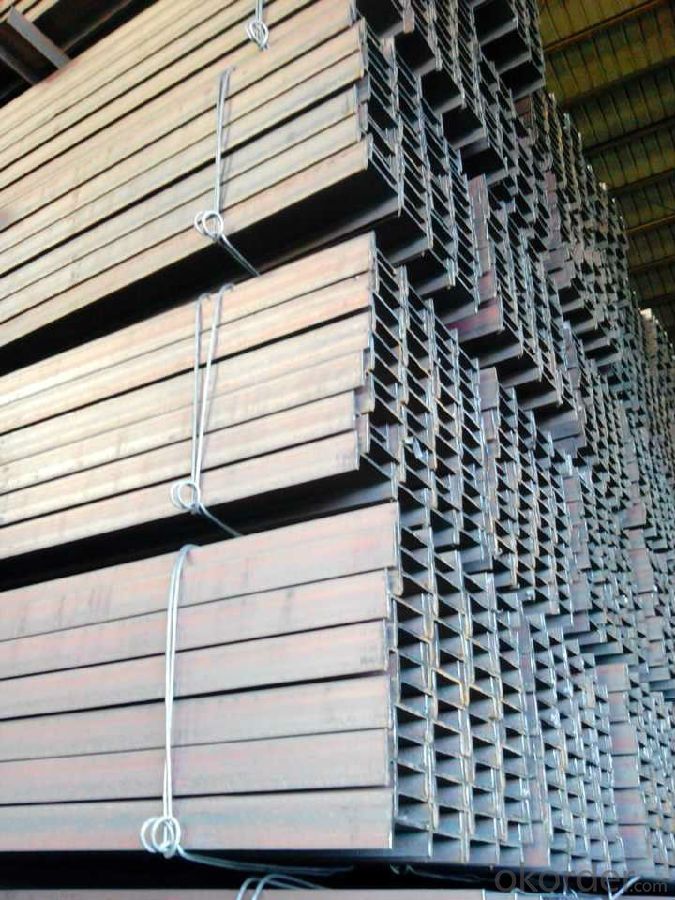
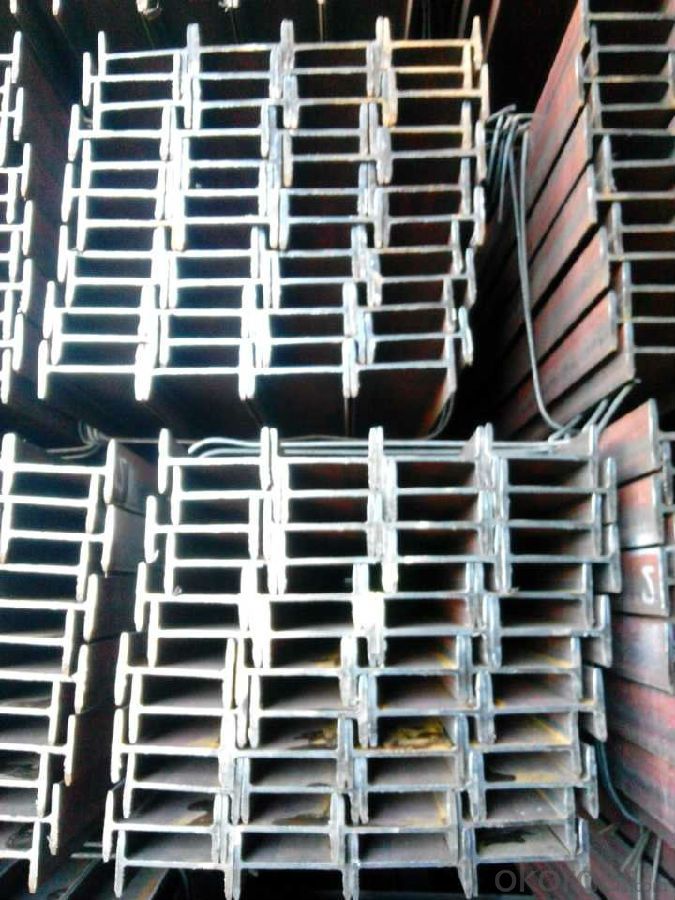
- Q: What are the different types of steel angles used in automotive applications?
- There are several types of steel angles commonly used in automotive applications. These angles play a crucial role in providing structural support and reinforcement to various components of an automobile. 1. Equal Angles: These angles have equal dimensions on both sides and are often used in automotive chassis frames. They provide stability and strength to the overall structure of the vehicle. 2. Unequal Angles: As the name suggests, these angles have unequal dimensions on each side. They are commonly used in automotive applications where different lengths or widths are required, such as in suspension systems or body reinforcement. 3. L-Angles: L-angles, also known as L-shaped angles or angle brackets, are widely used in automotive applications for joining and connecting different components. They provide stability and support to various parts, such as body panels, fenders, or engine mounts. 4. T-Angles: T-angles, also called tee angles, are used for structural reinforcement in automotive applications. They are commonly used in areas where additional strength and support are required, such as in roll cages or crash protection systems. 5. C-Angles: C-angles, also known as channel angles, are often used in automotive applications where high torsional strength is required. These angles are commonly used in frame construction, providing resistance against bending and twisting forces. 6. Z-Angles: Z-angles, also known as Z-shaped angles or Z-bars, are often used in automotive applications for structural support and reinforcement. They are commonly used in areas such as door frames or roof structures to provide strength and rigidity. It is important to note that the specific type of steel angle used in automotive applications depends on the specific requirements and design of the vehicle. The choice of angle is determined by factors such as load-bearing capacity, structural integrity, and the desired level of reinforcement needed.
- Q: Can steel angles be used for machine guards?
- Yes, steel angles can be used for machine guards. Steel angles are commonly used in the construction industry for their strength and durability. They can be easily fabricated and installed to create a protective barrier around machinery, ensuring the safety of workers and preventing accidents. The versatility of steel angles allows them to be customized to fit various machine sizes and shapes. Additionally, steel angles offer good impact resistance and can withstand heavy loads, making them suitable for use in machine guarding applications.
- Q: Can steel angles be used for sound barriers?
- Yes, steel angles can be used for sound barriers. Steel angles are commonly used in construction and can be suitable for sound barrier applications due to their durability, strength, and ability to absorb and block sound.
- Q: Can steel angles be used for staircase handrails?
- Yes, steel angles can be used for staircase handrails. They are commonly used due to their durability, strength, and versatility in design. Steel angles provide a sturdy support system for staircase handrails and can be customized to fit different styles and preferences.
- Q: What are the common design codes and standards for steel angles?
- The most common design codes and standards for steel angles include the American Institute of Steel Construction (AISC) 360, the European Standard (EN) 10056, and the British Standard (BS) EN 10056. These codes and standards provide guidelines for the design, fabrication, and structural analysis of steel angles, ensuring the safety and reliability of structures that incorporate these structural elements.
- Q: Can steel angles be used for manufacturing equipment frames?
- Yes, steel angles can be used for manufacturing equipment frames. Steel angles are commonly used in construction and manufacturing due to their strength, durability, and versatility. They provide structural support and stability, making them ideal for designing and constructing equipment frames. Steel angles can be easily welded or bolted together to create a rigid and robust frame structure. Additionally, steel angles can be cut to specific lengths and shapes, allowing for customization and precise assembly. Overall, steel angles are a popular choice for manufacturing equipment frames due to their reliability and cost-effectiveness.
- Q: What are the different types of surface finishes available for steel angles?
- There are several types of surface finishes available for steel angles, including hot-dip galvanized, painted, mill finish, and blackened.
- Q: What are the different types of steel angles used in door and window frames?
- The different types of steel angles commonly used in door and window frames include equal angle, unequal angle, L-shaped angle, and T-shaped angle.
- Q: What are the benefits of using hot-rolled steel angles?
- Hot-rolled steel angles offer several benefits, including high strength and durability, excellent structural integrity, and cost-effectiveness. They are ideal for various construction and manufacturing applications, providing stability and support in building frames, bridges, and machinery. Additionally, their malleability allows for easy fabrication and customization, making them a versatile choice for architects and engineers.
- Q: What is the maximum length for a steel angle bracket?
- The maximum length for a steel angle bracket can vary depending on the specific design and manufacturer, but it generally ranges from 6 to 12 inches.
Send your message to us
Steel Hot Rolled IPEAA Beam High Quality
- Loading Port:
- China Main Port
- Payment Terms:
- TT or LC
- Min Order Qty:
- -
- Supply Capability:
- -
OKorder Service Pledge
OKorder Financial Service
Similar products
Hot products
Hot Searches
Related keywords
